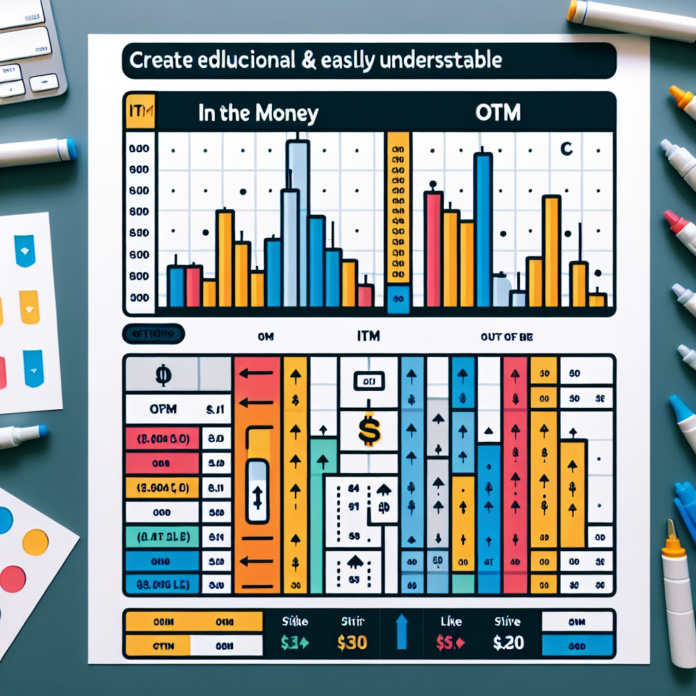Introduction:
Choosing the right strike price for an options contract is a pivotal decision for options traders. Strike prices that are In-The-Money (ITM) and Out-Of-The-Money (OTM) offer varied risk-reward dynamics and can profoundly affect the strategy’s outcome. This article delves into the nuances of ITM and OTM strike prices and how to strategically utilize them to align with your trading objectives.
Understanding In-The-Money (ITM) Options:
An ITM option indicates that the contract has intrinsic value. For a call option, this means the current market price of the underlying asset is above the strike price; for a put option, the market price is below the strike price. ITM options are more expensive due to their intrinsic value, but they also come with a greater probability of profitability at expiration.
For further in-depth exploration of ITM options, consider referencing The Options Guide’s explanations.
Pros and Cons of ITM Options:
Pros:
- Higher probability of ending up profitable
- Less sensitive to time decay compared to OTM options
- May be used for conservative strategies like income generation or hedging
Cons:
- More expensive due to intrinsic value component
- Profit potential may be limited compared to OTM options
- Larger initial investment affects cash flow
Navigating Out-Of-The-Money (OTM) Options:
OTM options have no intrinsic value, meaning the strike price is yet to be favorable in relation to the market price of the asset. For a call, the strike price is higher than the market price, and for a put, it’s lower. They are less expensive to acquire and could provide higher percentage returns if the market makes a favorable move.
Options analytics platforms, such as OptionsPlay, can be instrumental in evaluating the potential outcomes of OTM option trades.
Pros and Cons of OTM Options:
Pros:
- Lower cost and thereby lower financial risk if the trade goes awry
- Higher leverage, with the ability to control the same amount of shares for less capital
- Potential for high percentage returns if the prediction is correct
Cons:
- Higher likelihood of becoming worthless without a strong market move
- More vulnerable to time decay, especially as expiration approaches
- Risk of total loss is higher than with ITM options
Aligning Strike Price Selection with Trading Goals:
Your choice between ITM and OTM should reflect your market outlook and risk tolerance. Less risk-averse traders with a strong directional bias might lean towards OTM options for their leverage and profitability potential. Conversely, more conservative traders or those looking for high-probability trades may prefer the lower risk associated with ITM options.
Conclusion:
The ITM versus OTM decision is more than just an initial choice; it’s part of a strategic approach to position sizing, risk management, and market analysis. Whether you opt for the immediate value and stability of an ITM option or the explosive profit potential of an OTM option, ensuring it integrates with your overall trading plan is key.
For those seeking to deepen their understanding of options and strike price implications, educational resources and trading tools provided by Investor’s Business Daily can serve as an excellent starting point. By educating yourself and utilizing these tools, you can refine your options trading strategies and take a more informed approach to selecting ITM or OTM strike prices. Remember, in the dynamic options market, knowledge and strategic insight are your most valuable assets.




 AGF-B.CO
AGF-B.CO